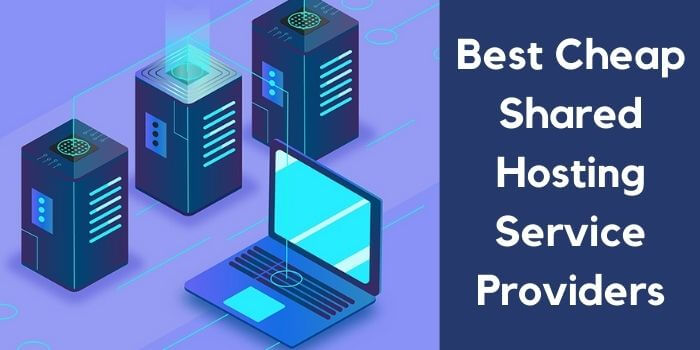
Machine learning stems from pattern acknowledgment and the idea that computers can use the information to learn by identifying patterns and at some point, make forecasts based on a formerly determined model, without being programmed. It can be much better recognized as increased knowledge– a combination of human and machine capabilities.
Gone are the days when a computer required a precise set of directions to finish a job. With the Machine Learning (ML) technology, today’s machines have become smarter, stronger and faster. Now they can learn patterns, attract reasonings and act in a secure way.
It’s not a completely new idea, but the mainstream interest of machine learning is still fresh. It dates to the 80s as well as 90s, though back then, it was not highly progressed.
The arrival of big and disorganized data, faster computational rate along with real-time options have opened a can of use cases for ML-based applications.
While you can use regular web hosting for more than just hosting HTML and CSS, you can’t host machine learning scripts on such solutions, you would need a GPU-enforced hosting provider.
However, with the aid of various ML tools readily available in the market, one can quickly start building their working version. So let’s check out a few of the important machine learning hosting platforms and compare their perks.
Comparison of various ML platforms
Google Machine Learning
With Google ML system, one can swiftly build powerful ML versions that can work on any information kind, of any size. The TensorFlow framework helps one develop the designs. Customers can take advantage of the state-of-the-art algorithms for producing search engine result and other industry-leading applications.
Quick-facts
Google Cloud Machine Learning Engine can make use of any tensor circulation model to perform large-scale training overtaken care of cluster. It’s assimilation with Google Cloud Dataflow aids in pre-processing, while Google Cloud Storage enables one to access data from it quickly. One can obtain Instant predictions utilizing online and batch prediction services. An individual can “HyperTune” the algorithms for automating the training. Individuals get computerized algorithms pointers too.
Best suited for
Google uses the excellent setting for running ML applications within limited target dates. Just like Amazon.com, it is likewise automated.
UI
- Google Command Line to manage TensorFlow utilizing Google Cloud ml-engine.
Pros
- Solid Combinations with other Google services like Cloud Data Flow, Cloud Storage Space, and Cloud Datalab
- HyperTune the algorithms to instantly detect the available versions
- The wholly Managed solution makes certain that invests even more time on establishing as well as less source provisioning and keeping track of
- Portable models permit one to train the ML versions in your area on TensorFlow and download for neighborhood implementation
Cons
- Less pre-trained models
The schedule of pre-trained designs is much less when compared to Azure.
Amazon ML Platform
You may not know it, but Amazon provides more than their trademark S3 hosting. Amazon Machine Learning platform supplies among one of the most computerized remedies to aid constructed ML applications swiftly. The system offers guided algorithms, wizards, and even conversion bots. With these guided tools, one can quickly start building his ML models.
Quick-facts
Amazon Machine Learning can be populated with data from any of these three:
- Amazon S3
- com Redshift
- MySQL databases in Amazon.com (RDS)
The pre-processing data procedures are immediately carried-on without requiring any manual intervention.
The aesthetic tools help one in previewing the versions as well as the APIs guide in creating them. When a model prepares, Amazon.com’s inbuilt tools can be made use of to refine and make improvements the information after which it can produce forecasts.
The customer can later decide whether he wishes to utilize set APIs to get forecasts for the entire dataset at the same time or use real-time API to generate estimates as needed.
Best suited for
High-level automation offers speed to the entire procedure. Hence, it is fit for processes that have deadline restraints. The rate it provides will aid build an application in secs.
UI
- Amazon Command Line Interface.
- Amazon Machine Learning Console.
Pros
- Quick as well as simple means to produce ML versions because of automation
- Deals scalability as well as this can produce billions of predictions for user’s application
- There is no setup expense. Thus, one can start utilizing it instantly as well as pay per usage
- Tested modern technology used by Amazon.com itself
Cons
- Top-level automation
For those that look for complete automation, Amazon ML platform is perfect. It cannot be made use of to educate entry-level programmers the economics of machine learning. - Restricted Predictions
com ML platform has limited forecast ability– binary classification, regression, and a multiclass category.
IBM (Watson)
IBM offers machine learning abilities with its Watson Analytics. Built on IBM’s proven analytics system, the developers can efficiently service information which needs to be stored in IBM Bluemix to construct smart models and improve choice making. It is mostly focused on getting models right into production with the aid of REST API connectors.
Quick-facts
Watson Interface has three parts– Check out, Predict and Set up. With Explore, the user can utilize readily available questions or enter a new message. The Predict tool offers a forecast on one or more target variables based upon others. Construct device gives a user interface to create workbooks. They can have the discussion materials, records, information visuals and so on. It further provides a drag-and-drop interface to produce the designs quickly. However, there is no automated formulas pointer.
Best suited for
Those who anticipate developing machine learning system backed applications with the assistance of API adapters.
UI
- Graphical Analytics Software SPSS for front-end.
- API ports.
Pros
- Deep learning abilities.
- Strong information visualization and a summary of numerous data worth.
Cons
- It is mainly targeted at large companies.
- It does not process structured data directly.
Azure ML
With Azure Machine Learning, one can construct useful applications based upon the cloud. It comes as a cloud-based entirely handled system which can be made use of to develop as well as release anticipating analytics solutions and even share them. Machine learning in Azure is based on used methods. With a first drag and decrease user interface, the user can go from idea to release in seconds.
Quick-facts
Azure machine learning is for both skilled and new data scientists. Thus, it offers an area for executing tasks like data expedition, picking approaches, pre-processing verifying and so on by hand. Its graphical interface provides a visual preview of each step in data constructing version for far better outcomes.
Best suited for
It is a powerful device for those who are just beginning with ML and need to establish an extensive understanding of this field.
UI
- The drag-and-drop setting of Azure Machine Learning workshop
- Packages Python and R coding
Pros
- Capability to carry out hand-operated operations is useful for finding out the essentials of ML
- It sustains a substantial selection of techniques, like binary, multiclass, regression, recommendation, discovery, message analysis and much more
- Cortana Knowledge gallery is an included advantage
Cons
- Deep learning flow
It is not suitable for tasks that call for fast application.
The verdict
Which machine learning system is best, depends on a customer’s demands. If what you search for is an extension as well as fully automated ML platform then Amazon.com is the very best fit, while IBM benefits a brand-new information scientist that is merely starting with structure ML applications. Azure, on the other hand, can handle both brand-new and seasoned data scientists.
Let us recognize what you think about these machine learning systems– which one are you utilizing and which one amongst the above is best.







